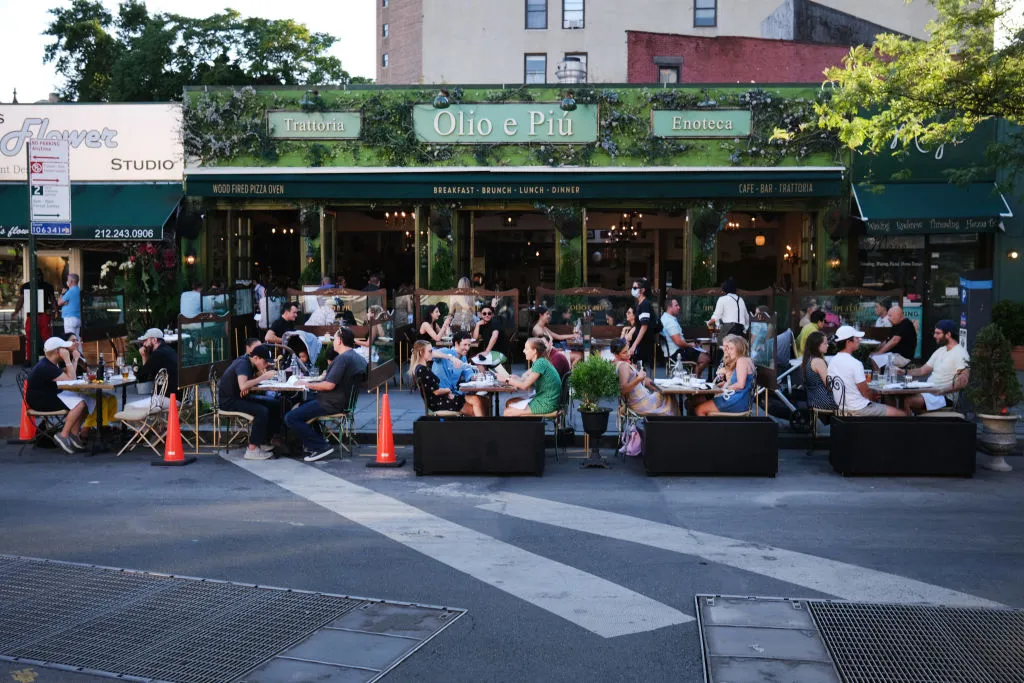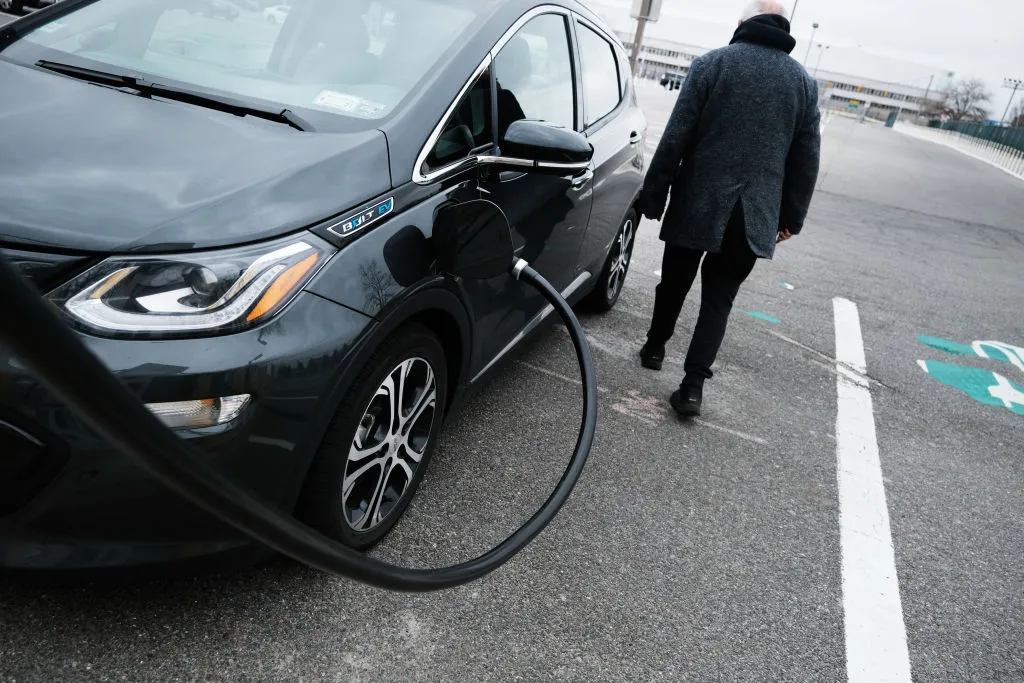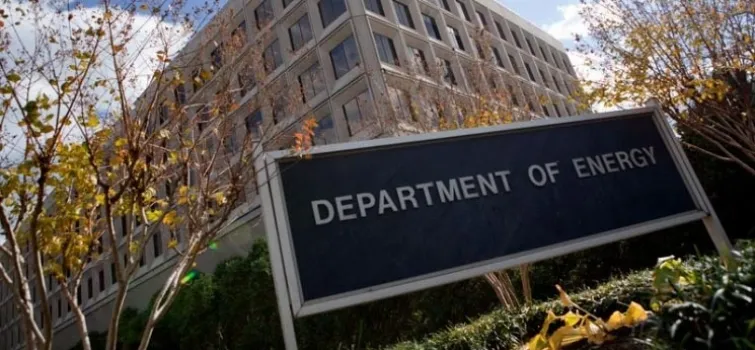By: Katie Pyzyk
• Published Aug. 4, 2021
A new pilot project to install electric vehicle chargers on light poles in Kansas City, Missouri, could reduce one of the most commonly cited barriers to greater electric vehicle adoption: The lack of accessible charging infrastructure. The barriers are especially acute for the millions of Americans who don't have garages.
Most personal EV charging — about 80% — occurs at home, usually overnight in a garage or in a carport. But according to the U.S. Census Bureau's 2019 American Housing Survey, more than one-third of U.S. homeowners — and nearly two-thirds of renters — do not have a garage or carport, which creates a significant barrier to at-home EV charging. The lack of access to garages and public EV charging is especially apparent in low-income communities and communities of color.
Kansas City's pilot project, which launched in summer 2021, aims to reduce those barriers by bringing an emerging charging solution to residents in an equitable way. The Metropolitan Energy Center (MEC), a nonprofit dedicated to energy efficiency and environmental health in the region, spearheaded the project to install EV chargers on existing streetlights in residential neighborhoods that anyone can pay a fee to use.
"There's a big gap with EV charging for renters and people who don't own their home," said Miriam Bouallegue, project manager for sustainable transportation at MEC. "They don't have the ability to install an outlet and may not have a designated parking spot if they live in a complex. With curbside charging, people can just park their cars like they normally would and plug in."
Public and private partners for the pilot include the city of Kansas City; the Missouri University of Science and Technology; the National Renewable Energy Laboratory (NREL); utility Evergy; utility and construction consultant Black & McDonald; e-mobility consultant EVNoire; and charging infrastructure company LilyPad EV. The U.S. Department of Energy provided funding, and project partners are providing in-kind contributions. The charging station owners, not the city, will handle ongoing operating and maintenance costs.
Explaining that DOE is flexible with the funding criteria for this project to allow for trailblazing and changing course as necessary, Erin Nobler, NREL project manager, said, "This is a fairly new area for transportation planners... It takes time and is frustrating — but that's a good thing... We're all so used to funding efforts where we have to hit milestones and deliverables. But it is OK and encouraged to pivot... We're looking for the best solution, not the easiest."
One goal is to increase the number of chargers in areas of Kansas City where EV adoption is high but there is not much charging infrastructure. Another goal is to prioritize infrastructure installations in areas where EV adoption is low to spur greater technology acceptance and adoption.
"With the [installations] being curbside, they're very visible to the public," Bouallegue said. "Often, chargers are in garages and not visible so people think, 'How can I buy an electric vehicle when I've never seen a charger?' We want to... encourage more EV adoption by showing people that public charging is available if they purchase an EV."
The process
The project started with a lot of research, data gathering and analysis. A geospatial analysis determined possible locations for the chargers, and a market demand model determined which factors influence charging need and behaviors.
Partners analyzed which streetlights can technically support curbside charging based on factors like voltage, control mechanisms and proximity to the curb. Plus, some streetlights in Kansas City only carry power at night and would therefore need upgrades to enable daytime charging. An analysis pinpointed priority areas based on demographics including income, home rentership and EV ownership levels.
Community engagement is a key component of this project. After ensuring the effort would be technically feasible, organizers began holding virtual community meetings and compensated the first 100 participants for their time. They presented potential charging infrastructure locations and gathered feedback on why those sites would or would not work well for community members.
"We're starting with the community first. We're not just pushing a solution but trying to understand their needs," Nobler said. "They are experts in their community, just like we're experts in technology."
Partners initially identified 300 potential charging sites but whittled down the list and now anticipate installing 30 to 60 chargers, depending on final costs. Final site selection will happen soon and installations are scheduled to take place later this year.
"We also have to keep in mind equity across the city. Installing equipment in some areas might cost more," Bouallegue said. "That's a balancing act we are taking into account: reduce the cost, make sure these chargers go where they're most needed and make sure there is a balanced distribution across the city."
After the chargers have been in place for a period of time, the partners will conduct a final analysis that looks at factors including infrastructure utilization rates, changes in EV purchase rates or car-sharing programs in the community, who uses the new chargers, how do they use them and when.
"That analysis hopefully will inform future efforts to expand streetlight charging in the city and elsewhere," Bouallegue said.
Pole power
Pole-mounted EV chargers have already seen some traction in Europe, including in London and Essen, Germany. But few U.S. cities have undertaken this task, and the lack of a road map makes it more challenging, Bouallegue said. About a dozen U.S. cities have seriously investigated the concept, but only five, including four besides Kansas City, actually have undertaken infrastructure installations, said Vishant Kothari, manager of electric vehicle-grid integration at World Resource Institute (WRI). The other cities include Lancaster, California; Los Angeles; Melrose, Massachusetts; and Portland, Oregon.
WRI connected with Kansas City for inclusion in a pole-mounted charging infrastructure study it launched in January 2021. WRI began the project largely to address the lack of accessible EV charging infrastructure in the U.S. which, among a host of other factors, is caused by high costs and the need for infrastructure space on already crowded streetscapes, Kothari said.
"With this in mind, we found that pole-mounted charging infrastructure can offer a solution, and we began to dive in deeper," Kothari said. "We found out from U.S. cities that there exists no real source of information and guidance to help them plan pole-mounted charging. That began our research into this area."
WRI released its findings in a comprehensive pole-mounted charging infrastructure guide in fall 2021. It examines two main solutions: mounting chargers on existing streetlights and on utility poles. Both types of equipment typically power the charger by tapping into the electricity fed to the pole.
One factor for choosing streetlight mounts is whether the light is high-pressure sodium or LED. In recent years many areas have switched to LED lamps, which are more efficient, yet the streetlight energy capacity often is not reduced accordingly to account for the adjustment and efficiency gains. This creates an energy gap that can be capitalized upon with a charging port.
Another big consideration is how much voltage each pole carries. Streetlights often carry 110 to 120 volts (V), which is only suitable for a Level 1 charger. However, utility poles typically carry thousands of volts, which is more suitable for Level 2 chargers' 208-240V connections, the preferred option for public space installations.
"The best type of pole depends heavily on local context," Kothari said, adding that equity and accessibility must be built into the planning process to maximize the benefits of pole-mounted chargers.
Like WRI, the Kansas City project organizers hope their final report helps other cities tackle pole-mounted EV charging projects.
"This is hard and takes time," Nobler said. "I absolutely hope other communities can do and take it a step further."
Article top image credit: Jamie Squire/Getty Images via Getty Images


















